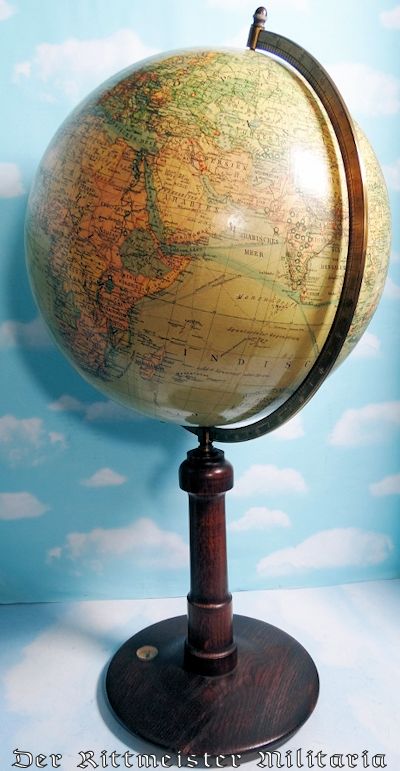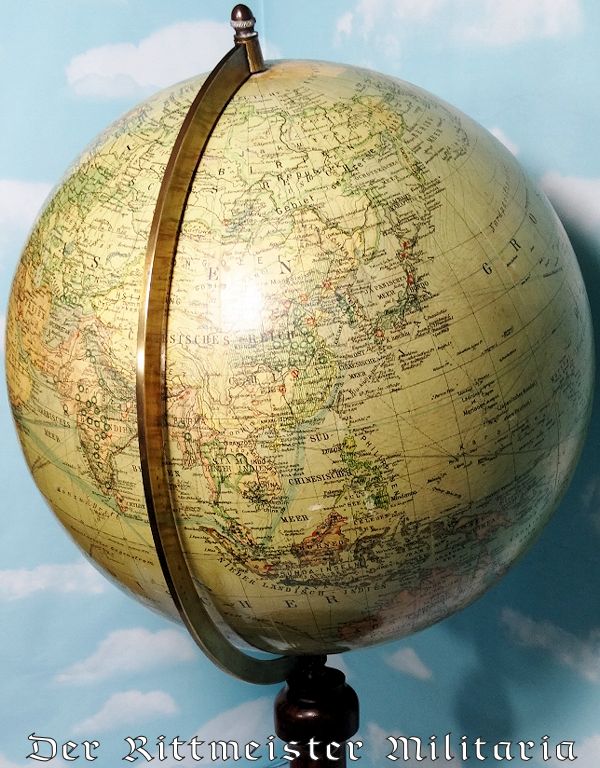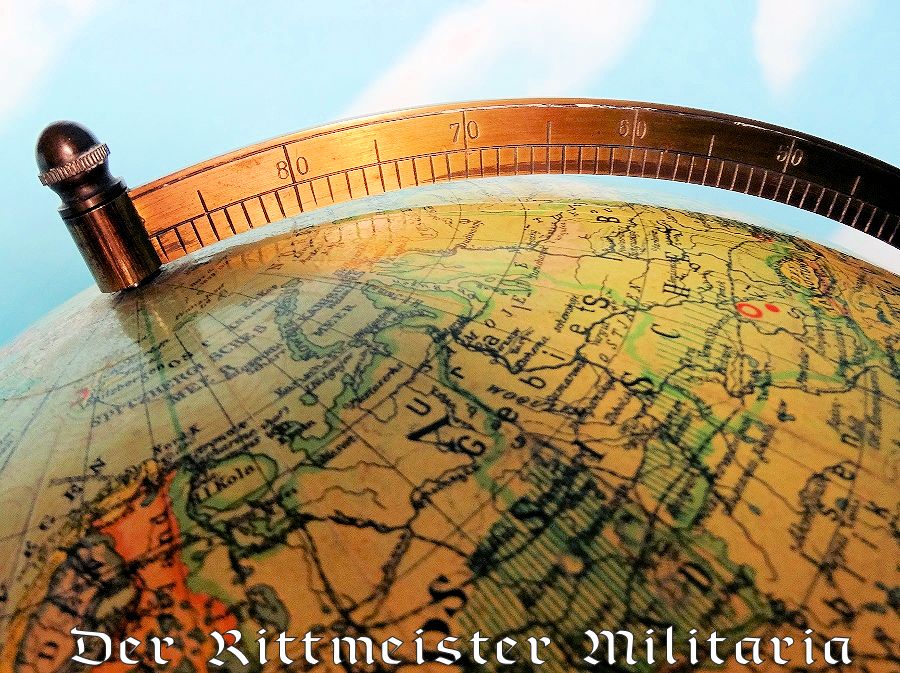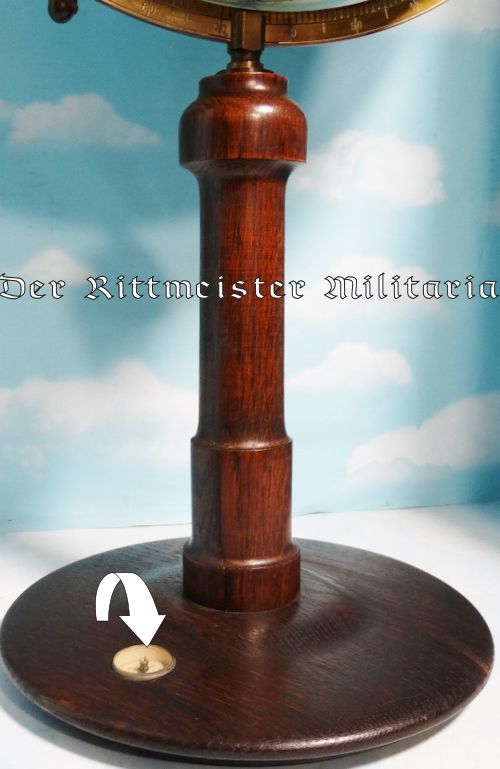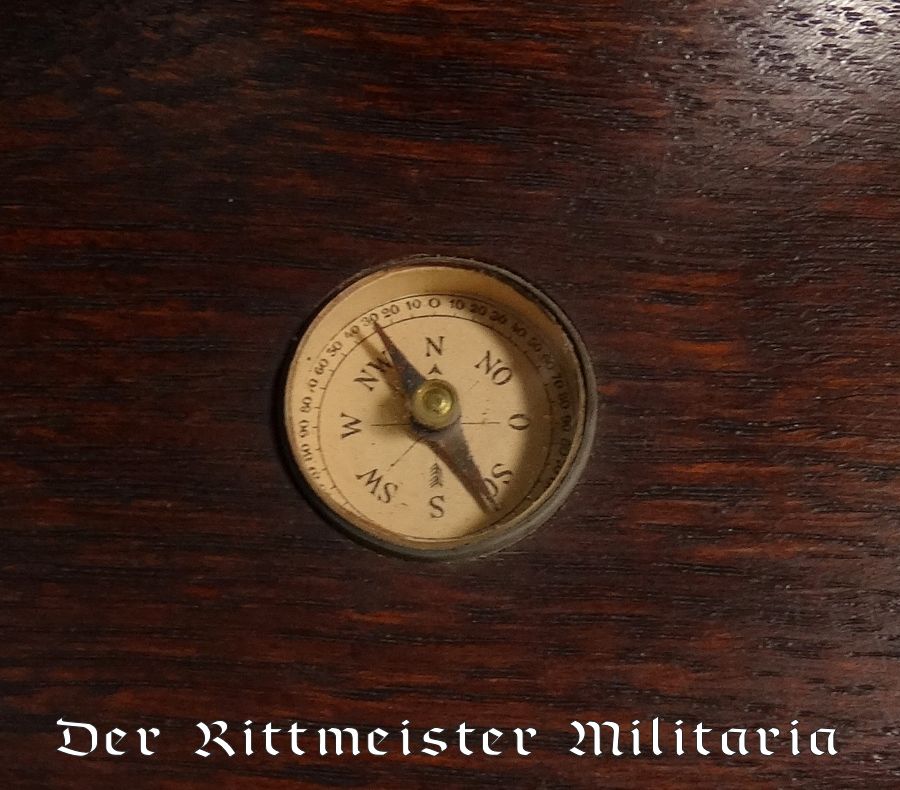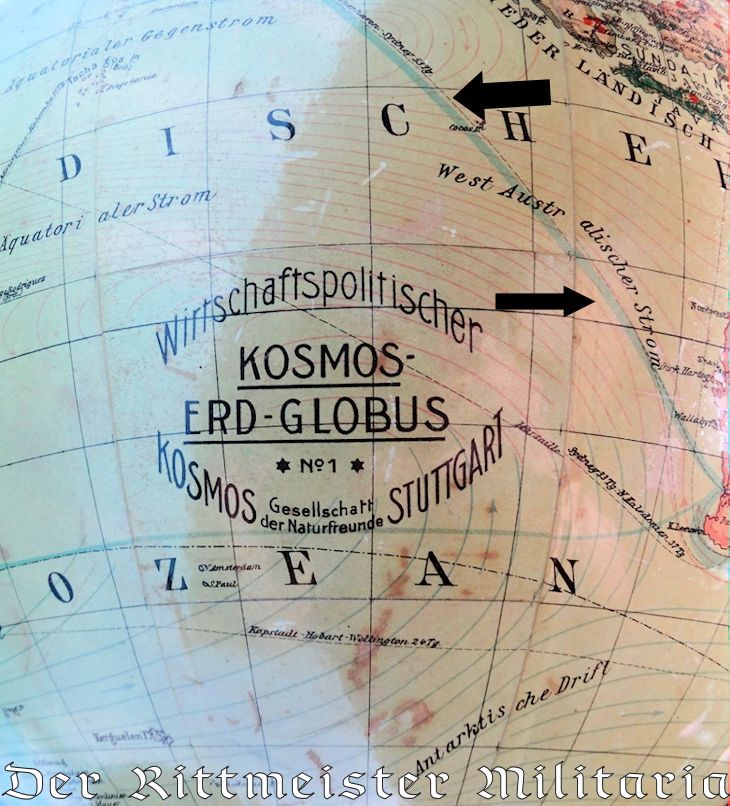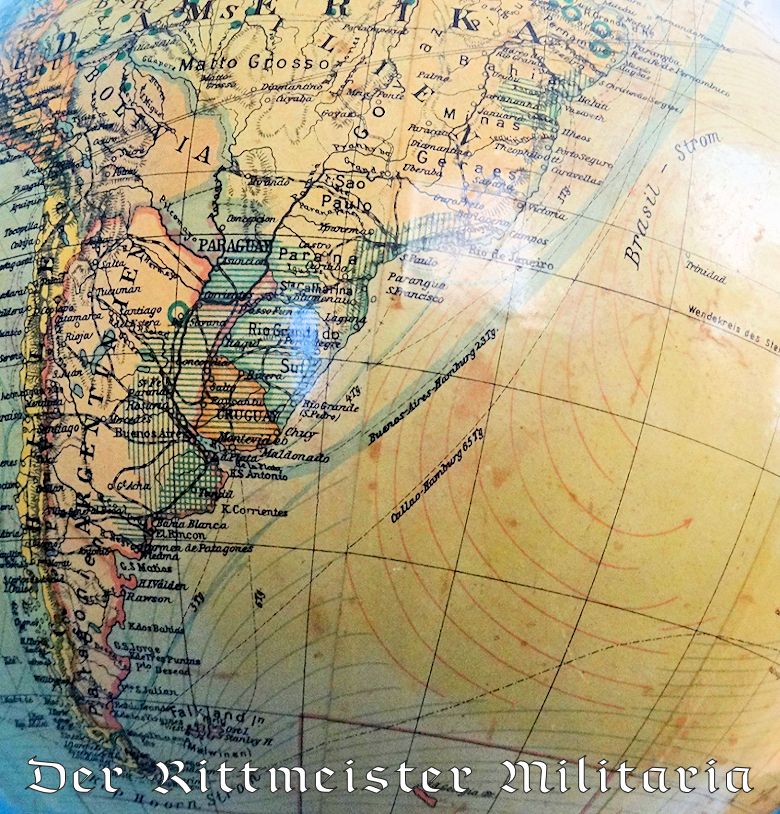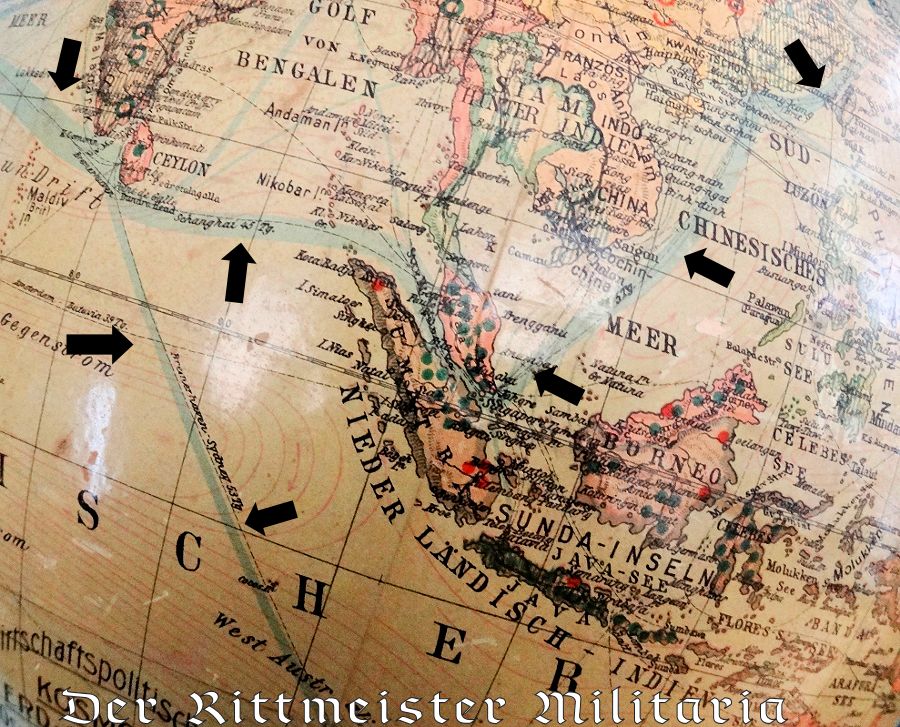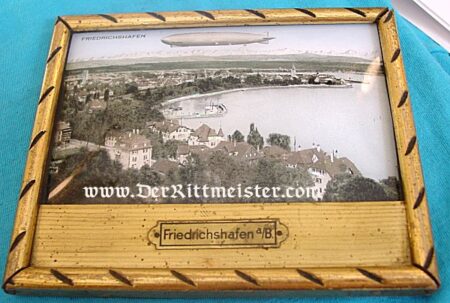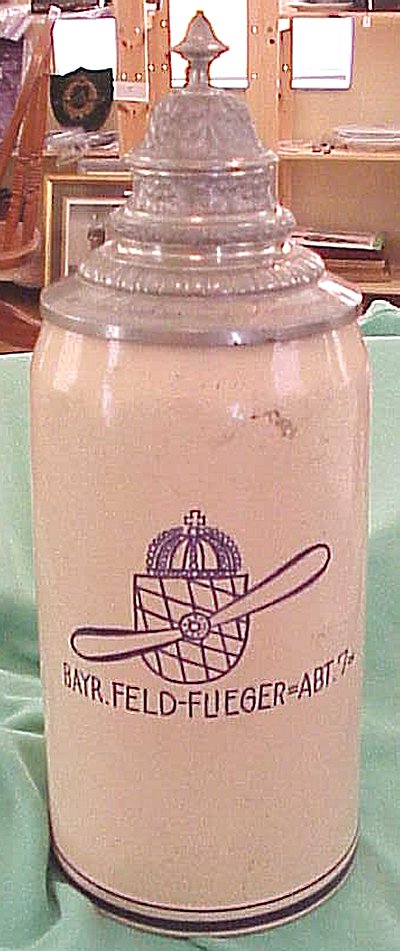Description
This is one of the most interestingzeppelin items we have ever offered. It is a world globe (produced in Stuttgart, Germany) depicting the Graf Zeppelin’s (LZ-127) various worldwide routes. The LZ 127 was patterned after the LZ 126. The LZ 126 served as part of Germany’s war reparations following WW I’s end. The Zeppelin Company’s leader, Dr. Hugo Eckener, personally flew the LZ 126from its Friedrichshafen home base in southern Germany to the Lakehurst, New Jersey, U. S. Naval Air Station in October 1924. It was then turned over to the U.S. Navy and renamed the U.S.S. Los Angeles, which became the longest-serving rigid airship ever operated by the US Navy. [Lakehurst was also the site of the Hindenburg’s (LZ 129) 1937 explosion. I still remember my late mother-in-law telling me how as a New York City school girl, she and her class watched the Hindenburg fly overhead on its way to that fateful rendezvous].
Eckener was a man who understood the value of publicity and took full advantage of it. Upon his return to Germany, he lobbied the German government for support and financial assistance to build a zeppelin for commercial purposes. While Eckener received some governmental support, most of the more than two million Reichsmarks necessary to begin the zeppelin’s production was donated by the German public. The German people had enthusiastically supported Ferdinand Graf von Zeppelin (1838-1917) when he built the first airships. Even when a zeppelin had crashed and been totally destroyed, the German people had donated money to restart the program. They were just as eager in 1926 to show their patriotism and pride in German aviation by financially supporting Eckener’s commercial zeppelin.
The LZ 127 was based on the same plans as the LZ 126. Work began in 1926 and the zeppelin was launched in 1928. It was christened the Graf Zeppelin by his daughter, Helene (Hella) Gräfin Brandenstein-Zeppelin. [PLEASE NOTE: Some of the dishware we offer from the Graf Zeppelin was part of the special place settings for her and her husband]. TheGraf Zeppelin made its first voyage to the USA shortly after being christened. The airship made some 590 voyages that covered more than one million miles of essentially trouble-free service. While the Graf Zeppelin did offer passenger service, its primary source of income was from transporting mail and critical cargo. The mailing of letters and postcards provided a large source of revenue. Zeppelins actually carried small post offices onboard to frank mail that was traveling from Germany to other destinations on the zeppelin routes. This was hugely popular among collectors of all kinds, including stamp collectors, aviation collectors, etc. Mailing a letter aboard a zeppelin was hugely expensive. The U.S. Postal Service issued several different postage stamps for use only on zeppelin flights.
In 1929, a year after the Graf Zeppelin was first launched, it was sent on an around-the-world tour. The tour was funded by American newspaper magnate William Randolph Hearst, who had accompanied Teddy Roosevelt during the 1898 Spanish-American War’s invasion of Cuba. Hearst paid $200,000 for the commercial rights and assigned four people to travel aboard the Graf Zeppelin on its global voyage. The trip actually began in Germany with the Graf Zeppelin’s flight west to Lakehurst, NJ, which was the tour’sofficial starting point. Weltrundfahrt 1929 then commenced with a return to Friedrichshafen for refueling before continuing nonstop across Europe, Russia and Siberia to Tokyo. After five days in Tokyo, the Graf Zeppelin flew on across the Pacific Ocean to Los Angeles, CA (the first ever NONSTOP flight over that ocean), before completing its last leg across the USA to Lakehurst.
At first glance, our item appears to be a standard 1920’s German world globe. It was produced in full color and measures 41″ in circumference. Long distance mileage (in kilometers) is depicted between selected world cities (as was common on regular globes). Special blue paint, however, indicates the Graf Zeppelin Weltrundfahrt’s assorted international routes.
The globe stands 26″ tall. Printed on its side is the information below.“Wirtschaftspolitischer
Kosmos –
Erd-Globus
* No 1 *
Kosmos Gesellschaft der Naturfreunde STUTTGART”[Economic Cosmos Earth Globe Number 1 Cosmos Friends of Nature Society Stuttgart]
The base of the globe is made of fine-quality wood. Inserted in its base is a small compass that measures 1″ in diameter.
Generally, I am not one to speculate about an item’s origins or history if I do not have hard facts to back me up. This time, however, I will speculate. I have two theories. The first is that it was owned by a real zeppelin fan, particularly of theGraf Zeppelin and its travels. My second theory is that it was owned by somebody at the Zeppelin factory, perhaps an executive or other important person. The globe’s superior quality and the time that somebody took to patiently trace theGraf Zeppelin’s various routes on its surface is just amazing.
